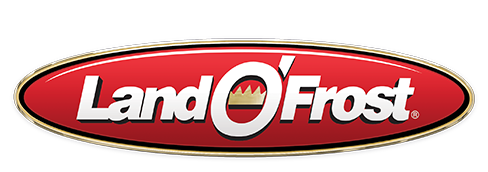OK, so we all know that protein is important, right? But, with so much nutrition information out there, it can be confusing. We hear we need to get protein in every day and that having the right amount is paramount to our children's health.
Moms just want to know: How much does my kid need, when should they eat it and just how can I make sure they get enough?
Let’s remove the mystery from protein and give you a simple guide so your child can grow and thrive. After this, you’ll feel confident that you’re giving your little ones what they need.
The Low-Down on Protein
Protein is one of three macronutrients (carbohydrates, protein, fat), which are known as the building blocks of life. Every cell in the body contains and requires protein for growth, development and metabolism.
Want to keep your kid out of the nurse’s office or home sick from school? Want to give their muscles the proper tools to let them thrive and recover on the field,
court or dance floor? Protein is essential for both of these, too!
Protein in All the Right Places
Protein can be found in almost every food. However, certain foods contain higher amounts and higher quality. For example, animal foods (meat, poultry, fish,
eggs, dairy) contain all of the essential amino acids (the ones our body can’t make on its own) and have higher biological value — meaning you get more bang for your bite.
You can also get protein from plant sources like nuts, soy, seeds, legumes, bean pastas and peas that contain additional plant compounds that help protect your body from illness.
Did you know that there is protein in whole grains and even vegetables? Since the amount of protein in whole grains and
vegetables are generally lower than other foods, it’s important to have a variety of foods every day to ensure that you’re getting what you need.
The Right Dose of Powerful Protein
The recommended daily allowance (RDA) of protein states that adults should get a minimum of eight grams of protein for every 20 pounds of body weight per day.
Of course, everyone’s protein needs are different based on frame, lean muscle mass, activity level, age, gender and so on, so one’s exact protein needs should be adjusted accordingly.
Growing children, teens, athletes and dieters restricting their caloric intake may require more than the RDA. By choosing a healthy, balanced diet, you can easily meet your protein needs.
Protein for Kids
The amount of protein recommended for children will vary based on age, gender and activity level, but generally follows this information, sourced from
MyPlate.gov.
*1 serving= 1 ounce equivalent of protein (7-8 g protein/oz.)
| Daily Recommendation |
Age (Years) |
Amount (in servings)* |
| Children |
2-3 |
2 |
|
4-8 |
4 |
| Girls |
9-13 |
5 |
|
14-18 |
5 |
| Boys |
9-13 |
5 |
|
14-18 |
6 ½ |
What a 1 Oz. Equivalent Looks Like
Serving sizes can be hard to estimate, so we’ll try to simplify! In general, you can get one serving of protein from one ounce of meat, poultry or fish, one-fourth cup of cooked beans, edamame, one egg, one tablespoon of nut butter, or half an ounce of nuts or seeds. A small steak will have 3.5 to four servings, a small chicken breast half will have three servings (about the size of your palm), a can of tuna will have three to four servings, and one cup of lentil soup will have two servings.
| Example Food |
Picture |
Amount of servings |
| 1 small lean hamburger (about the size of a hockey puck) |
 = = |
2-3 |
| 1 sandwich slice of turkey |
 |
1 |
| Can of tuna |
 |
3-4 |
| 1 egg |
 |
1 |
| 12 almonds |
 |
1 |
| 1 tablespoon nut butter |
 |
1 |
| 2 tablespoons hummus |
 |
1 |
| 1 soy or bean burger patty |
 |
2 |
| ½ cup canned bean (black, kidney, pinto, garbanzo, etc.) |
 |
2 |
| ½ cup cooked lentils |
 |
2 |
Protein in Every Meal?
Every meal should have a good balance of macronutrients – protein, carbohydrate and fat.
Protein takes longer to digest, helping your kids stay satisfied at mealtime, so they’re not asking for another
snack an hour after feeding them. It’s also for that alert feeling, and satiety helps your kids avoid that post-meal coma. Only so much protein can be digested at one time, so it is best to distribute it evenly throughout the day.
Getting protein from a variety of sources is your best bet to ensure a balance of micronutrients (think vitamins and minerals like iron, calcium, vitamin B, vitamin E, etc.). Balance your animal sources with plant-based sources. A half cup of tempeh (an Indonesian soy product made by deep-frying fermented soybeans) has roughly the same amount of protein as a two ounce portion of chicken breast, and a bean/lentil burger can provide up to 15 grams per patty (that’s two servings)!
Remember to include these sources in your daily diet too — for example, when cooking beef tacos, add in a can of kidney beans, or when making tuna casserole, add in a higher protein grain like quinoa!
Phew, that was a lot of protein power tips.
Turn to this guide whenever you need a refresher on roughly how much protein your little tot should be getting, where you can get it and the right portions. Just like the other two macronutrients (carbohydrates and fat), it is best to get a balance of each during your meal times and snacks. Create a colorful, balanced plate and you and your kids will be livin’ the healthy dream



 =
=









